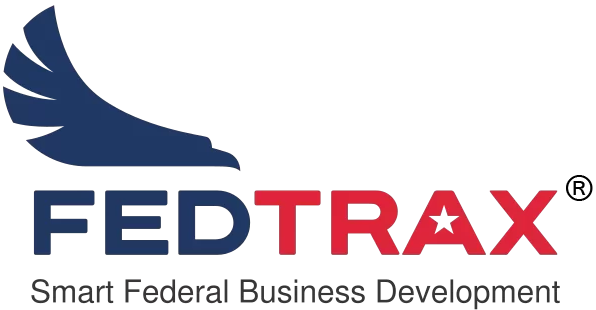
If the number 1 reason for missed sales is not asking for the order, then a close second has to be the mis-applied sales pitch; that is, trying to sell to non-qualified prospects. This is particularly true for high value B2B sales, such as new technology or outsourced professional service contracts. When sales prospecting, you just don’t have the time to gamble on sentries, tire-kickers or lonely junior execs looking for someone to talk to. Top professionals maximize their personal and company time and resources with sound prospect qualification, and only present solutions to high-likelihood buyers where the deck is stacked to win.
Wasting Valuable Sales Prospecting Time
If you’re in professional sales, you’ve been to a trade show or six, either to work the booth or, as I often do, to troll them. Sometimes I go to trade shows where my potential customers are displaying as a means of gathering information, they most important being the name or names of people in their company that might be in a position to hear what I have to say. Of course, one doesn’t sell in this situation out of respect to the gang in the booth. They’re not your prospects anyway, and it’s a surefire way to get kicked out of the show
Well, if you’ve done the same thing, you have likely gotten a kick out of the overly zealous booth operator that prematurely pitched his company to you just because you happened to be standing close to his booth. I’m not talking insignificant dollars here either. The errant assumption that I am a prospect has seen me pitched everything from a 6-figure technological advancement to a 7-figure distributorship, all without the eager beaver so much as asking me what I do. Out of sympathy and respect, I now cut off the sales prospecting pitch with the statement, “I’m not a likely prospect for you.”
I had similar experiences as VP of Sales in a technology firm with inbound inquiries, where the mention of a potential million-dollar deal from a total stranger got some of my less experienced sales staff into a flurry of activity in generating estimates and wasting time. In an effort to show what is thought of as meaningful activity, in this case a proposal, many salespeople kid themselves and ignore prospect qualification as a measure of success, to their ultimate detriment.
Now if you start to Googling, you’ll see plenty of copy sales prospecting and qualification from sales experts, ranging from improving on the old IBM BANT process to the “new” systems for qualification that are touted by sources such as Inc. or Entrepreneur. There’s nothing wrong with any of these, but they’re not foolproof. High-value sales is a long, involved process with nuances driven by each situation. The same CEOs who are hyper-picky when the pipeline is flowing with inquiries will pitch just about anybody when the lead machine is running dry.
My position is simple—figure out what you need to know in order to determine if a sale is even a potential outcome, ever, and use that data to position your approach.
Create a Target Prospect Profile
It amazes me how many well-meaning people engaged in sales prospecting for companies don’t have a clear picture of what these people look like. Without that target, everyone is a suspect, and prospects are hard to create if you don’t know what you’re looking for. Here are the key things to keep in mind:
Company Scale
This tends usually to be in terms of sales dollars, but can be in terms of number of people engaged in a certain activity (call center support, software seats) or transactional volume. How you draw up the profile has everything to do with what your solution is. Many technology solutions fall into the “better mousetrap” category, meaning that they offer an improvement over standardly accepted technology but don’t cause a revolution. In these cases, the number of times that savings occurs each year determines the value of the solution and what people will pay for it. Know where that scale needs to be before going down the road of your sales process.
Verticals
What are the typical industries that your product is ideally suited for? It may be very vertically oriented, or it can span a number of industries in a more commodity position. When sales prospecting in these markets, there is a greater chance that someone you meet may have a need you can actually fill.
Titles
What titles do you sell to? Information technology people may sell to CIOs or CTOs. Maybe it’s maintenance, accounting or production. Sometimes you sell to the C-suite, but perhaps you often need to deal with HR and satisfy their needs
Suspect Data
Knowing the scale, markets and positional titles that are your best prospect fit, you can begin to bump up against suspects that may qualify as prospects by looking at their business cards and asking a few questions through your sales prospecting process.
If a suspect doesn’t fall within the company scale of your target prospects, that’s a deal-killer straight away. Move on. The same answer may apply if her industry vertical doesn’t match your targets. Many times in technology that is not always a disqualifier, depending upon if your solutions can serve others outside your target verticals.
When it comes to titles, understand that if the person you encounter isn’t a decision maker, he may be able to be an advocate or get you to someone that is. More often than not, you may be speaking to an influencer that can’t say Yes, but can sure as hell say No. It’s comical how many experts tell you to only deal with decision makers or bust. In 2014, many of the true decision makers (often a committee or board) are unavailable and send out others to investigate vendors. They form a moat around the decision maker castle that you have to cross, so ignore them at your own risk. Just know that the buck doesn’t stop here.
What else?
Competing Technology
What is the current solution that’s out there that this suspect is using? FedEx would understand the offerings of UPS and the Post Office for small parcel shipping to be able to position their solution, and you need to be familiar with the competition so it’s recognizable when you ask the question.
Level of Discontentment
This is often termed “Need”, but a salesperson wanting to get a proposal out the door can easily be intellectually dishonest with himself, assuming that if they don’t have the great product that he offers, of course these people have a need. Reality is, people rarely will spend top dollar to improve upon something that is working fairly well but can be better. It’s easy to rationalize simply adding oil to the machine. Changes get made when the suspects are flat out unhappy with the current scene, and know that it is costing them a boatload of cash to stand pat. Great salespeople stoke that discontentment like picking away at a wound. If you’re target is content with the status quo, it is likely that your sale won’t go anywhere for now.
One quick way to determine level of discontentment is finding out if there is a budget in place to solve this problem. If so, this company is bent on solving the problem with or without you.
Opportunity Levels
Lack of a current budget doesn’t always mean there is no potential sale. It’s just a different kind of opportunity.
Level A Opportunity
This is often the best type of opportunity you can reveal. During initial discovery, sales determines a high need that has been lying dormant. It is unbudgeted and unplanned, which are downers. It is also generally free of competition and a cattle call bidding process. Most of the time there is no existing incumbent solutions already in house as you’re offering something not yet considered or at least a new endeavor. However, these tend to be smaller opportunities and not immediately apparent during an initial qualification process.
Level B Opportunity
There is a current budgeted and planned need here, and is what many sales people are accustomed to. Once you know this, you also know the baggage that comes with this type of sale. There is always competition and likely someone in the organization will be trying to commoditize your solution. The job of sales is not so much developing a need as there already is one, it is differentiation of offering. The best sales teams bring some Level A into Level B early in the sales process by discovering some hidden value that they are particularly suited for and getting it written into the bid spec to improve their chance of victory.
When filtering prospects out of suspects, knowing your prospect qualification profile in advance and bumping a potential prospect against it can be done in mere minutes with a few questions, with the possible exception of learning the amount of discontentment for Level A sales opportunities. If a suspect passes initial muster with the other criteria, go ahead and pursue Level A sales for now or the future in a classic Discovery process.
